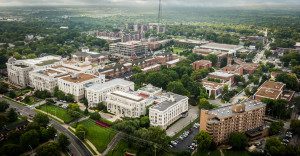 In a recent U.S. News analysis that compared universities’ spending with the educational quality they offer, Belmont ranked No. 5 among its peers in the South region and was the highest ranked private University in that category, indicating the high efficiency of Belmont in providing excellent educational quality while keeping expenses low.
In a recent U.S. News analysis that compared universities’ spending with the educational quality they offer, Belmont ranked No. 5 among its peers in the South region and was the highest ranked private University in that category, indicating the high efficiency of Belmont in providing excellent educational quality while keeping expenses low.
Belmont President Dr. Bob Fisher said, “This ranking is a huge deal to us because it reflects the overall Belmont strategy to provide a first-class education to our students while keeping our costs low. All credit for this accomplishment goes to the diligence of our faculty, staff and administration, who work extremely hard at their jobs and do their best to find effective—and economical—solutions to our campus’ needs.”
According to the website, U.S. News compared public and private colleges’ academic quality, as measured by their position in the 2015 Best Colleges rankings, to the funds spent to achieve that quality, and ranked the most efficient universities under that matrix. The publication noted, “Schools that are featured on these lists are doing a good job in managing their financial resources relative to other schools that may have far greater financial resources because of more state funding, higher tuition or larger endowments.”
“It’s no secret that Belmont has achieved phenomenal growth in the past 15 years,” said Vice President of Finance and Operations Steve Lasley. “What makes Belmont’s story unique is that we’ve increased our campus footprint by 27 percent, adding numerous world-class facilities, while driving down our energy costs at the same rate. These are the kinds of efforts that ultimately serve our students by keeping overhead low.”
Provost Dr. Thomas Burns added, “I’m especially proud that this efficiency is being achieved while we’re still managing to attract and retain top faculty. In fact, according to a 2014 Chronicle of Higher Education salary survey, Belmont’s compensation level is significantly higher than our peers, placing us in the top 20 percent (or higher, depending on position) of master’s level institutions nationwide according to salary comparisons. Plus, our tuition remains among one of the lowest among our private, peer institutions.”
The measurement of financial resources includes how much an institution spends per student on instruction, research, student services and related educational expenditures. That figure is then divided by the University’s overall score in 2015 Best Colleges rankings to determine operating efficiency.


